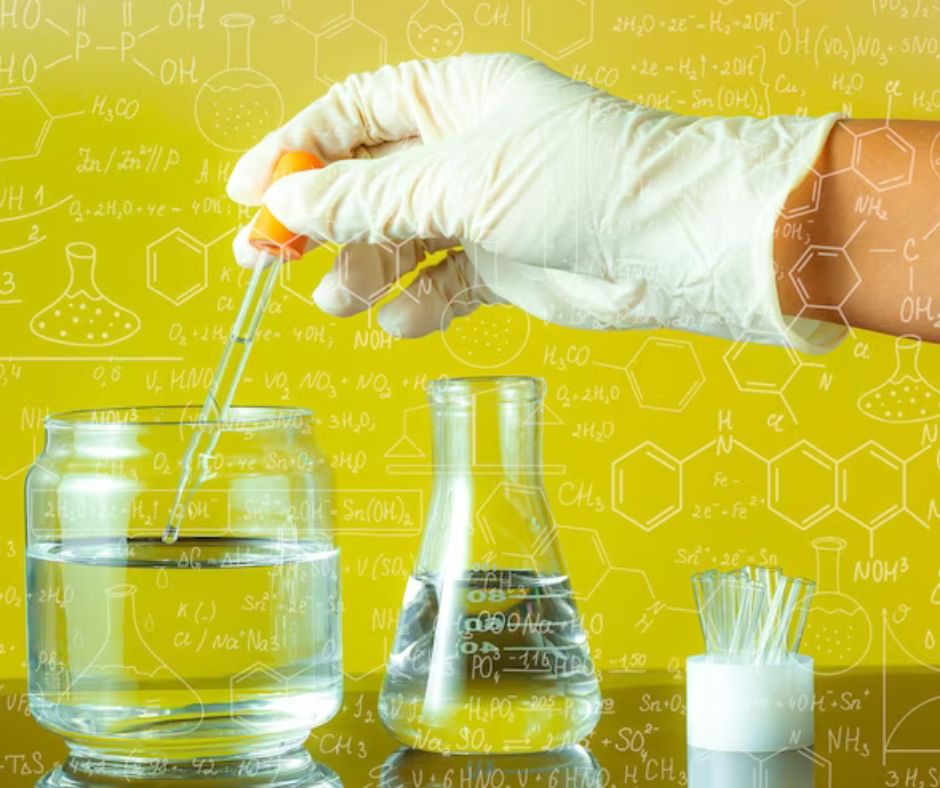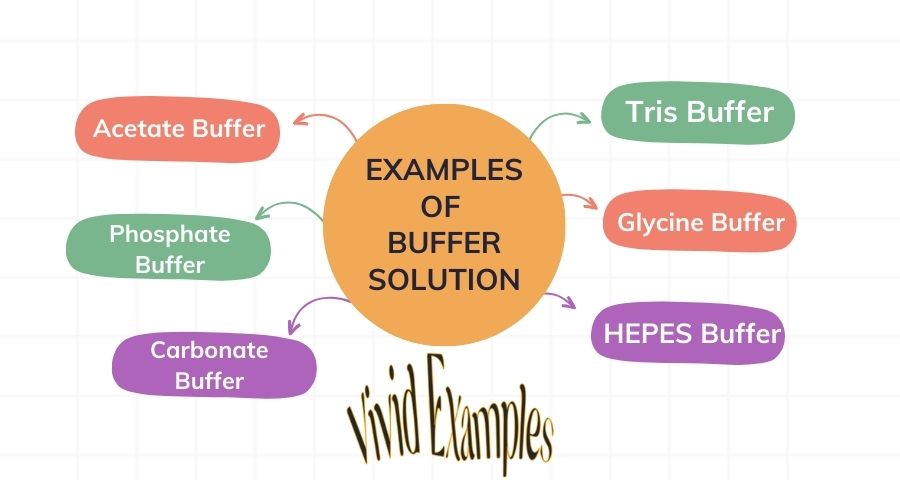Buffer solutions are aqueous solutions that can resist changes in pH when small amounts of acids or bases are added. They are composed of a weak acid and its conjugate base or a weak base and its conjugate acid. Buffer solutions are commonly used in laboratory and industrial settings to maintain a stable pH level in various chemical reactions. Some examples of buffer solutions include Acetate Buffer, Phosphate Buffer, Carbonate Buffer, Bicarbonate Buffer,Tris Buffer, and Good’s Buffers.
Examples of Buffer Solutions
Buffer solutions are special mixtures that resist changes in pH levels when acids or bases are added. They typically consist of a weak acid and its conjugate base, or a weak base and its conjugate acid. This composition allows buffer solutions to stabilize pH levels, making them essential in chemistry, biology, and medicine. Here is a brief description of Buffer Solutions is given below:
1. Acetate Buffer
In biochemistry and analytical chemistry, an acetate buffer is commonly used. It consists of acetic acid (CH3COOH) and its conjugate base, sodium acetate (CH3COONa). This buffer system helps maintain a stable pH, particularly around pH 4.75, making it suitable for various applications in laboratories and industrial processes.
2. Phosphate Buffer
Biological and biochemical research often relies on phosphate buffers. These buffers contain phosphoric acid (H3PO4) and its conjugate bases, such as sodium phosphate (Na2HPO4/NaH2PO4). Phosphate buffers are crucial for maintaining stable pH levels in biological systems, including cell culture media and enzyme assays.
3. Carbonate Buffer
In both medical and environmental applications, carbonate buffers are essential. They consist of carbonic acid (H2CO3) and its conjugate base, sodium carbonate (Na2CO3). Carbonate buffers play a vital role in maintaining the pH balance in blood and are also used in environmental science to stabilize pH in water treatment processes.

4. Bicarbonate Buffer
The bicarbonate buffer system is a key component of the human body’s acid-base balance. It comprises carbonic acid (H2CO3) and its conjugate base, sodium bicarbonate (NaHCO3). This buffer system helps regulate pH in the blood and is essential for maintaining physiological functions.
5. Tris Buffer
Tris buffer, containing Tris(hydroxymethyl)aminomethane (TRIS) and its conjugate acid, hydrochloric acid (HCl), is widely used in molecular biology and biochemistry. It effectively maintains a stable pH range and is often employed in protein and nucleic acid research.
6. Good’s Buffers
Good’s buffers encompass various organic acids and bases, including MES, MOPS, and HEPES. These buffers are known for their high buffering capacity and stability over a wide pH range. Good’s buffers find applications in cell culture, protein chemistry, and biochemical assays.
7. Acetate-Citrate Buffer
Acetate-citrate buffer consists of acetic acid (CH3COOH) and citric acid (C6H8O7). This buffer system is commonly used in biochemical assays and enzyme studies due to its ability to maintain pH stability in a slightly acidic range.
8. Glycine Buffer
Glycine buffer, containing the amino acid glycine (NH2CH2COOH), is utilized in protein electrophoresis and buffer capacity studies. It is particularly effective in maintaining a constant pH environment during electrophoretic separations of proteins.

9. HEPES Buffer
HEPES buffer, which contains 4-(2-hydroxyethyl)-1-piperazineethanesulfonic acid (HEPES), is commonly used in biological research and cell culture. This buffer system is ideal for maintaining pH stability in physiological conditions and is widely used in various biochemical and cell-based assays.
10. MES Buffer
MES buffer comprises 2-(N-morpholino)ethanesulfonic acid (MES) and is frequently employed in biochemical assays and electrophoresis. It provides stable buffering capacity within a narrow pH range, making it suitable for various laboratory applications.

